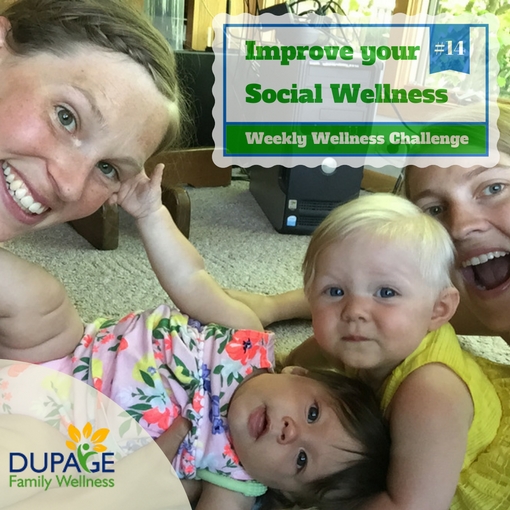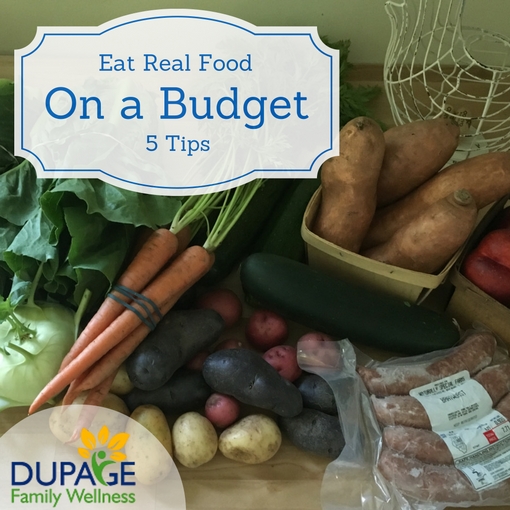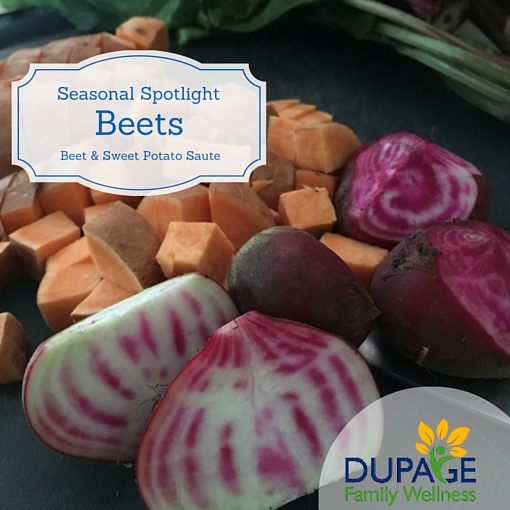
A few weeks ago, we published an article about living to 100. I wanted to emphasize the importance of community and relationships discussed in this article. It is obvious to most of us that eating healthy and moving our bodies is important, but most of us don’t think about how important meaningful relationships are to our health. Did you know that having strong social connections has been linked to motor skill retention, cancer survival, increased immune function, memory preservation, and longevity? Social isolation on the other hand has been linked to increased risk for heart disease and Alzheimer’s disease. Check out this article for links to the research studies on everything I just mentioned!
This week- I challenge you to work on your social wellness! We often get so stuck in our daily routines that we don’t take time to reach out to new people around us, or to deepen our relationships with friends and family.
Here are a few ideas for you to increase your social wellness this week:
1) Call an friend that you haven’t spoken to in a while just to say hi and see what is going on in their life
2) Start a weekly dinner with friends or family. Joelle told me recently that her and her husband are planning a Friday night dinner each week and inviting different friends over to join them.
3) When you are out and about, strike up a conversation with people around you. I know that it is easier to sink into the comfort of your smart phone, but you never know what sorts of interesting people you could meet!
4) Be more social, and use less social media! Ever seen a group of people out to dinner all sitting there staring at their phones? It happens all the time- try putting it away and connecting!
5) Join a group. If you are feeling like your social circle needs some beefing up- try joining something you are passionate about to meet like-minded people. This could be a church, a gardening club, a card group, a fitness class, a sports team, or a volunteer group.
6) Once you join a group- make sure you participate! So many people are “members” of various groups, but only go on occasion. You will form much deeper relationships by interacting with the group more often.
7) Meet someone for a walk! Not only will this get you moving, but if gives you a good opportunity to chat with someone!
So this week I challenge you to try one or two of the suggestions on the list to improve your “social wellness.” Remember, when it comes to relationships with those around us, it isn’t a contest to see who can have the most relationships, but rather how deep and meaningful those relationships are.
If you have more ideas on what you do to improve your social wellness, I’d love to hear them! Chat with us on our facebook page!
-Dr. Jamie Thomure

I have a confession to make. Four years ago, I was a couponer, and we ate the Standard American Diet (SAD) full of processed, convenience foods. I got home from the grocery store, proudly spread my purchases on the table, and made my husband guess how much I paid for everything. I could buy a table full of “food” for just a few dollars. I now understand that this "food" was not really food at all, but chemical fillers with few nutrients. The "food" was cheap, but when I think about the long term effect on our health, it was NOT really cheap.
When we switched to eating a real, whole food diet I was concerned about how much it would cost. As an extreme couponer, I got most processed foods for almost free, but there are few, if any, coupons for fruits, vegetables, or meat. If you are not an extreme couponer, processed, packaged foods are expensive.
When you switch to a real food diet, you will spend more produce and meat, but you will no longer need to buy the processed foods.
For example:
- Buy a bag of carrots rather than a bag of chips
- Buy a dozen eggs rather than a box of pop-tarts
You get more nutrients per dollar when you buy real food compared to processed food containing fillers and few nutrients.
We've been able to eat real food on a tight budget. To break it down, here is the monthly grocery budget for our family of two:
- $100 for meat from a CSA at Walnut Acres Farm. (They are wonderful people. If you sign up, tell them Joelle sent you!)
- $250 for everything else (fruit, veggies, and other staples). I take this money out as cash each month, so I know exactly how much I spend and do not exceed that amount.
For the month of July, I challenged myself to shop local. I shopped only at farmers markets and a small health food store within walking distance. Why? If you go back to reading the post "Should I Buy Organic Produce?". I realized that the absolute best option for our health is to buy locally and sustainably grown food. As an added bonus, this benefits the local community and the environment. It was not that difficult to shop local in July, and I plan to continue this challenge.
Now, back to the budget. With a little creativity, I can stick to my new shop local policy and stay within the budget. You can do this too! Here are a few tips to help you stretch your dollar:
- Buy what is plentiful and in season. Whether you are at the grocery store or a local farmer’s market, you will notice that there is an abundance of the items that are in-season, and the price of these goes down to sell them while they are fresh. These are the bulk of the items that I buy. In July, we ate a zucchini, a variety of greens, cabbage, onions, kohlrabi, broccoli, and cucumbers. Although, I mainly stuck with these less expensive, in-season foods, I supplemented them with a few more expensive items like berries, potatoes and carrots. The beauty of buying in-season is that as the weeks go by and the seasons change, the in-season foods are also constantly changing. Although we’ve been eating zucchini now, I know that that soon there will be an abundance of tomatoes and not long after that winter squash will be in season.
- Use all of what you buy. A great way to stretch your money is to eat the entire edible portion of what you buy, without letting any go to waste. For example, in our recent seasonal spotlight on beets, you will notice that the recipe included both the beets and the beet greens. Add items that you aren’t sure what to do with to a stir fry or soup. If it’s a vegetable try roasting it (see "Making Vegetables the Taste Good").
- Don’t be afraid to try new foods. Prior to this challenge, I shopped at Aldi. While there are a lot of things that I like about Aldi, I was stuck in a rut when it came to buying produce. Along with the idea of point #1, often the things that are cheaper may not be the things that we are used to buying or even think that we like. I’ve been pleasantly surprised when I tried radishes, rutabagas, kohlrabi, and a variety of greens this month.
- Buy in bulk when appropriate. Buying in bulk can save you money if the items freeze well. I specifically noticed this with berries. I could buy a very small container of blueberries for $3-$4 or I could buy the 5 lb box for $15. I opted for the 5 lb box and immediately portioned out what I thought we’d eat for the next few days and put the rest in the freezer. Now we are able to enjoy blueberries all month and a fraction of the price, I am actually snacking on some frozen blueberries and walnuts right now. Keep point #2 in mind and only buy and freeze items that you know you will eat, so the food does not go to waste.
- Get to know your farmer. One of the reasons that we did the shop local challenge was to connect with local people that grow the food that we eat. Once you build that relationship, you might be able to barter services for veggies, purchase the less pretty and therefore less desirable produce at a lower price, or buy leftover produce for less at the end of the day. Even without these advantages, I feel so much better knowing where my food comes from, and I am excited to directly support the people that are growing and raising my food.
I’d love to hear about tips and tricks that you have found to save money on your food bill! Connect with us on facebook.
Joelle Kurczodyna, NTP
@kfamilygoessustainable on Instagram

Recently I was fascinated by a podcast featuring breakthrough work in the area of human genomics to discover the common factors of populations that live the longest.
The term “Blue Zone” has been coined for the five regions that have a significantly greater concentration of centenarians, that is, people that live to be at least one hundred. There are five areas that have been named Blue Zones, which include: Ikaria, Greece; Okinawa, Japan; Ogliastra Region, Sardinia; Loma Linda, CA; and Nicoya Peninsula, Costa Rica.
Scientists have learned that both lifestyle and diet have the ability to turn on and off genes that contribute to longevity and robust health.
Common Lifestyle Factors
-
People move their bodies - a lot. They walk, and garden, and have an active life.
-
Healthy lifestyle is important to the entire community ! They have close social circles that reinforce healthy behaviors.
-
Time to de-stress daily is part of the culture. There are different traditions in each area including siesta (afternoon nap), a happy hour sort of tradition, or a daily time for prayer and meditation.
-
The centenarians are an integral part of their communities, often religious communities. These people were not alone but had neighbors, friends, and family frequently dropping to spending time with them.
-
The centenarians are committed to their families.
Common Nutrition and Diet Factors
- Stop eating when your stomach feels 80% full to avoid weight gain.
- Eat the smallest meal of the day as your last meal in the evening.
- Eat mainly plants and beans. Eat meat rarely and in portions of 3-4 ounces. In the Blue Zones, they only eat meat five times per month, on average.
- Limit alcohol consumption to 1-2 glasses per day.
- Eat mostly locally sourced food, including a lot of herbs.
What are the most common foods in each area?
Since the foods are locally sourced, they differ for each region.
- Ikaria, Greece, the foods known for longevity include: feta cheese, lemons, and herbs like sage and marjoram that they use daily in tea.
- The healthy staples in Okinawa, Japan are bitter melons, tofu, garlic, brown rice, green tea, and shitake mushrooms.
- In Sardinia, Italy they eat goats milk and sheep cheese, sourdough bread and barley, along with fennel, fava beans, chickpeas, tomatoes, almonds, milk thistle tea, and wine from the locally grown Grenache grapes.
- It may be surprising that one of the Blue Zones was actually in the United States. What are they doing right in Loma Linda California? Most members of this community are Seventh-day Adventists, so they avoid smoking, drinking, TV, movies, and other forms of media. Their diet follows biblical principles, thus focusing on whole grains, nuts, and vegetables with a small amount of meat and fish. It also includes avocados, salmon, beans, oatmeal, and eggs. They drink only water.
- In the Nicoya Penninsula of Costa Rica, one of the mottos is "Put an egg on it". In addition, they eat beans, corn, squash, papayas, yams, bananas, and peach palms.
Learning from My Great Grandmother
The photo is my great-grandmother, who lived from 1900 - 1999, almost 100 years with a good quality of life, and without chronic illness. I wish I could talk to her now. From what I can gather, she shared many characteristics of those in the "Blue Zones".
- She was always active, walking, swimming, and riding a "tri-cycle" even into her 90's.
- Along with my great grandfather, they grew a big garden, cooked from it, and shared it with the family.
- She was part of social groups that kept active playing games.
- She was active in her communities, and volunteered frequently.
- Family was important to her. She came to stay with us for a few weeks every summer, and when she was not here she always kept in touch.
Not only is she my longest living relative, she is also a good role model following these lifestyle patterns. In addition, she always had a positive outlook on life and was a joy to be around.
What Can We Take Away from the Blue Zones?
We can learn the following from the Blue Zones:
- There is no one size fits all diet that is best for everyone. Rather, we should eat the real whole foods that are found locally.
- We should listen to the signals of our body.
- We must realize that our lifestyle affects our health and pay particular attention reducing our stress and maintaining our community involvement.
Joelle Kurczodyna, NTP
 Our family has made a commitment to source our produce from local farms with organic growing methods. We invested in a share from a local Community Supported Agriculture (CSA) program and buy the rest of our produce from local farms at farmers markets. This has given us a chance to try foods that we don’t usually buy, and I have loved finding ways to prepare them and learn about them (follow on instagram @kfamilygoessustainable)
Our family has made a commitment to source our produce from local farms with organic growing methods. We invested in a share from a local Community Supported Agriculture (CSA) program and buy the rest of our produce from local farms at farmers markets. This has given us a chance to try foods that we don’t usually buy, and I have loved finding ways to prepare them and learn about them (follow on instagram @kfamilygoessustainable)
Our most recent CSA basket contained two varieties of beets, Chiogga beets and candy-stripe heirloom beets (pictured). People tend to have a love/hate relationship with beets, and I’ve always fallen more on the hate side, but I wanted to give these freshly grown beets a chance. They didn’t disappoint. I paired them with sweet potatoes, bacon, and the greens from the beet leaves (see recipe below) and the flavors were a perfect marriage of sweet and salty.
Besides their unique taste and bold color, beets pack a powerhouse of nutrition.
Beets are jam packed with vitamins and minerals including vitamin C, magnesium, iron, copper, and phosphorus. They also contain carotenoids, lutein, glycine, betaine, and beneficial flavonoids. With all of these nutrients, beets have been known to be beneficial for the heart, prevent certain cancers, stimulate liver and gall bladder function, prevent respiratory problems, prevent cataracts, be an aphrodisiac, and increase energy levels.
Beets are worth trying, especially if you find them freshly picked from your local farmer. Note: Beets are also be used as a dye, so they could turn your hands or counters red.
Beet and Sweet Potato Sauté
Ingredients
- 3-4 small to medium beets or 2 larger ones, peeled and cubed with greens
- 2 small to medium or 1 large sweet potato, cubed
- 4 slices bacon
Directions
- Cook bacon on stove top in large sauté pan (I use my cast iron skillet). Set bacon aside.
- Use the bacon fat to sauté the beets and sweet potatoes. Cook until beets and sweet potatoes are cooked through.
- Add beet greens and chopped bacon to your beet/sweet potato mixture. Cook until everything is warm and greens are cooked down.
- Remove from heat and enjoy!
Perfect as a side dish. Try cooking an egg on top for a delicious breakfast!
What are your favorite recipes using beets? Please share on our facebook page.
Joelle Kurczodyna, NTP
@kfamilygoessustainable on Instagram
Joelle and I are excited to announce that we have been working hard to create our own wellness program just for you!! There will be more details posted in the coming weeks, but we wanted to give you a heads up so you can get excited too! 
In this wellness program we will teach you how to eat, how to move, how to reduce stress, how to sleep better, and more! Basically, our goal is to help you become happier and healthier! We are thrilled to share our knowledge and experiences with you!
If you are just as pumped as we are about becoming happier and healthier- email me at This email address is being protected from spambots. You need JavaScript enabled to view it. and let me know. We are looking for a few lucky people to test out the program before the official launch date!
In Health
Dr. Jamie





 Our family has made a commitment to source our produce from local farms with organic growing methods. We invested in a share from a local Community Supported Agriculture (CSA) program and buy the rest of our produce from local farms at farmers markets. This has given us a chance to try foods that we don’t usually buy, and I have loved finding ways to prepare them and learn about them (follow on instagram
Our family has made a commitment to source our produce from local farms with organic growing methods. We invested in a share from a local Community Supported Agriculture (CSA) program and buy the rest of our produce from local farms at farmers markets. This has given us a chance to try foods that we don’t usually buy, and I have loved finding ways to prepare them and learn about them (follow on instagram 
